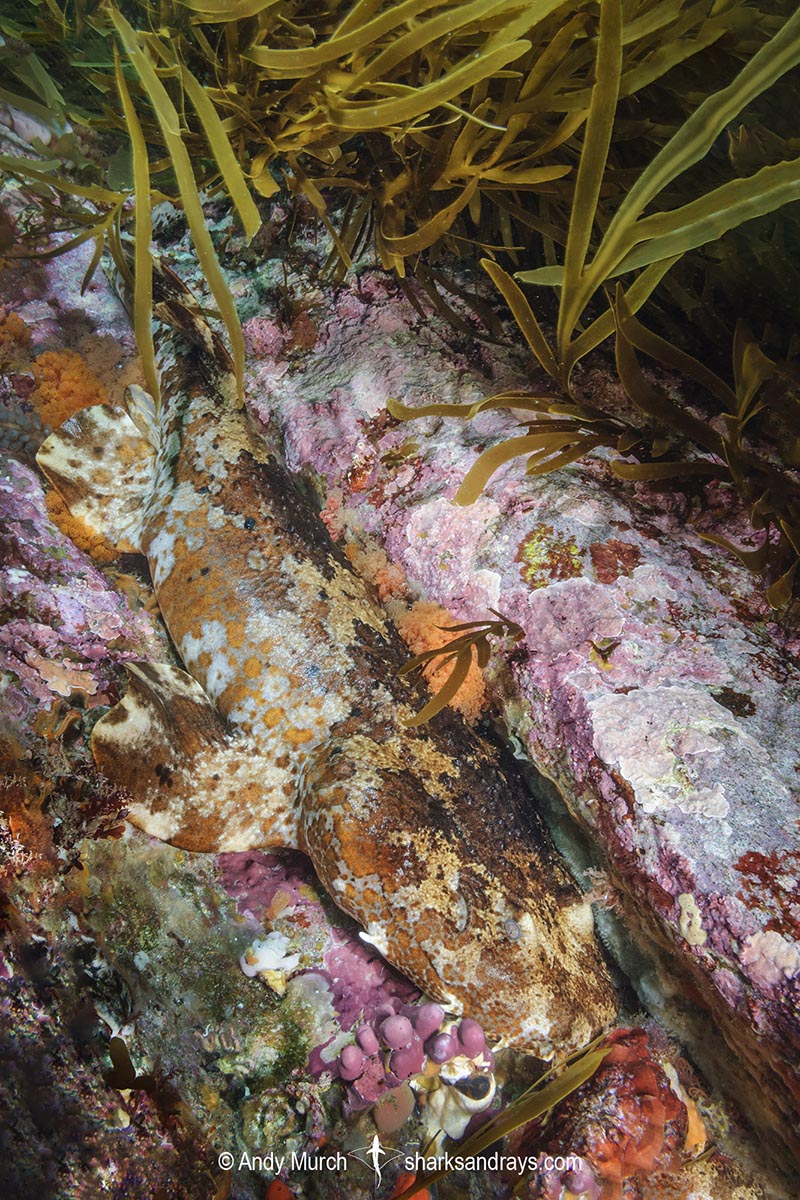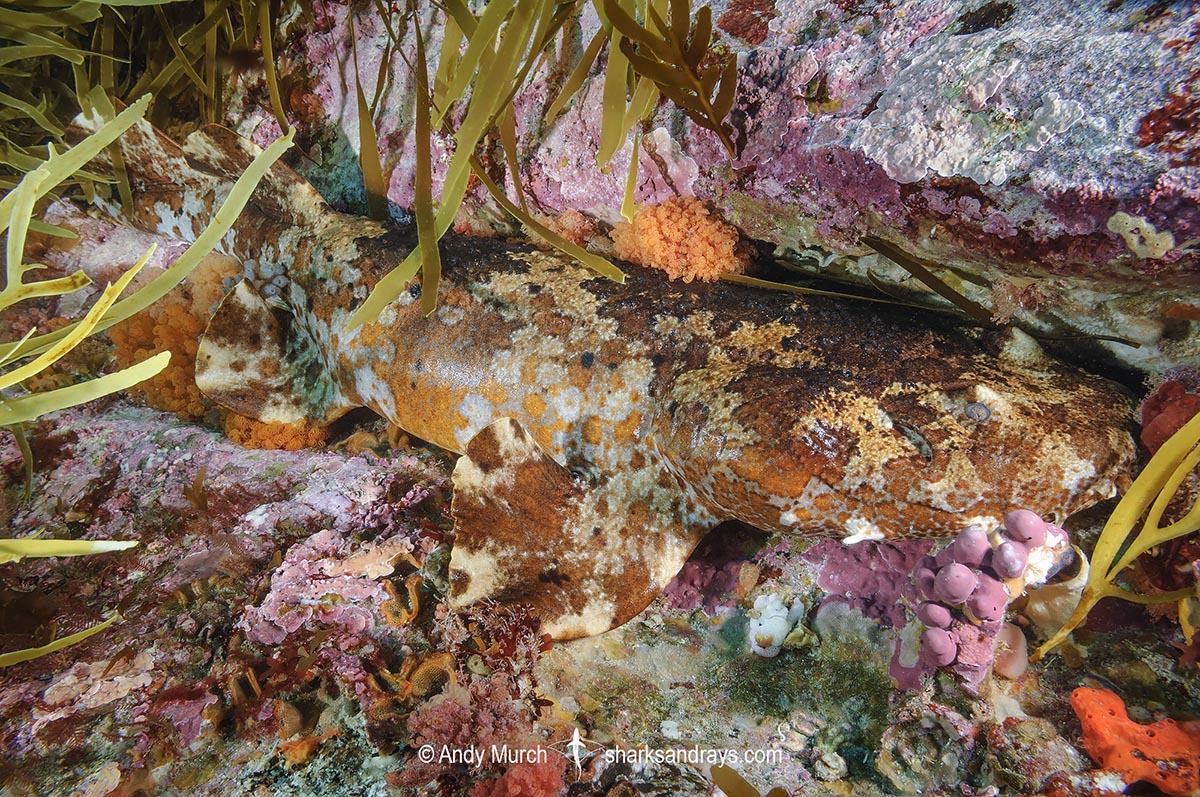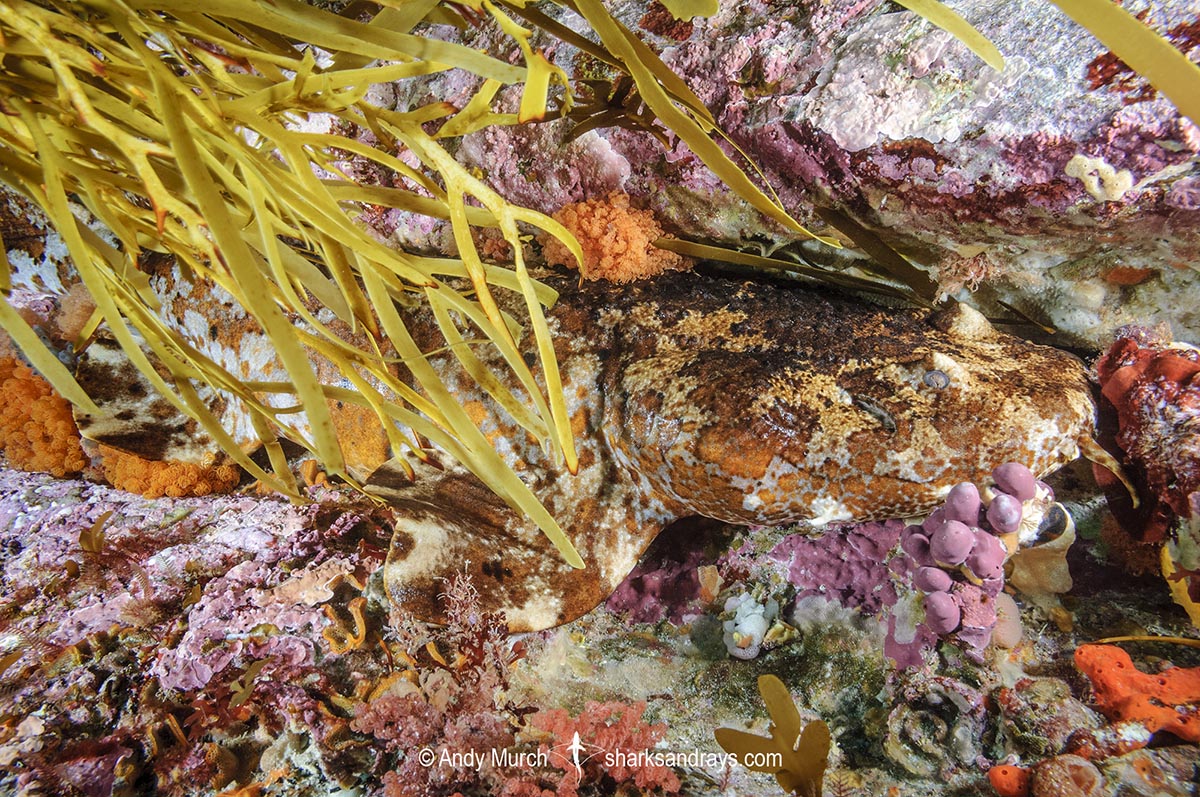Common names
Cobbler Wobbegong.
Binomial
Sutorectus tentaculatus.
Synonyms
Crossorhinus tentacularis, Crossorhinus tentaculatus, Orectolobus tentaculatus.
Identification
A relatively small species of wobbegong that is less dorsally compressed than other orectolobids. Nasal barbells unbranched. Two simple unbranched preorbital dermal lobes, and two simple post-spiracular dermal lobes. The posterior-most dermal lobe may be indistinct.
Two equally sized, long, low dorsal fins. First dorsal origin anterior to pelvic fin insertion. Notch present midway along terminal margin of caudal fin (posterior to subterminal notch).
Distinct warty (crocodile-like) tubercles on top of head and body. Dorsum pattern consists of large reddish brown and/or orange areas, broken up by white or cream irregular spots.
Size
Maximum verified length 92cm. Size at birth approximately 22cm. Age at maturity 60-65cm.
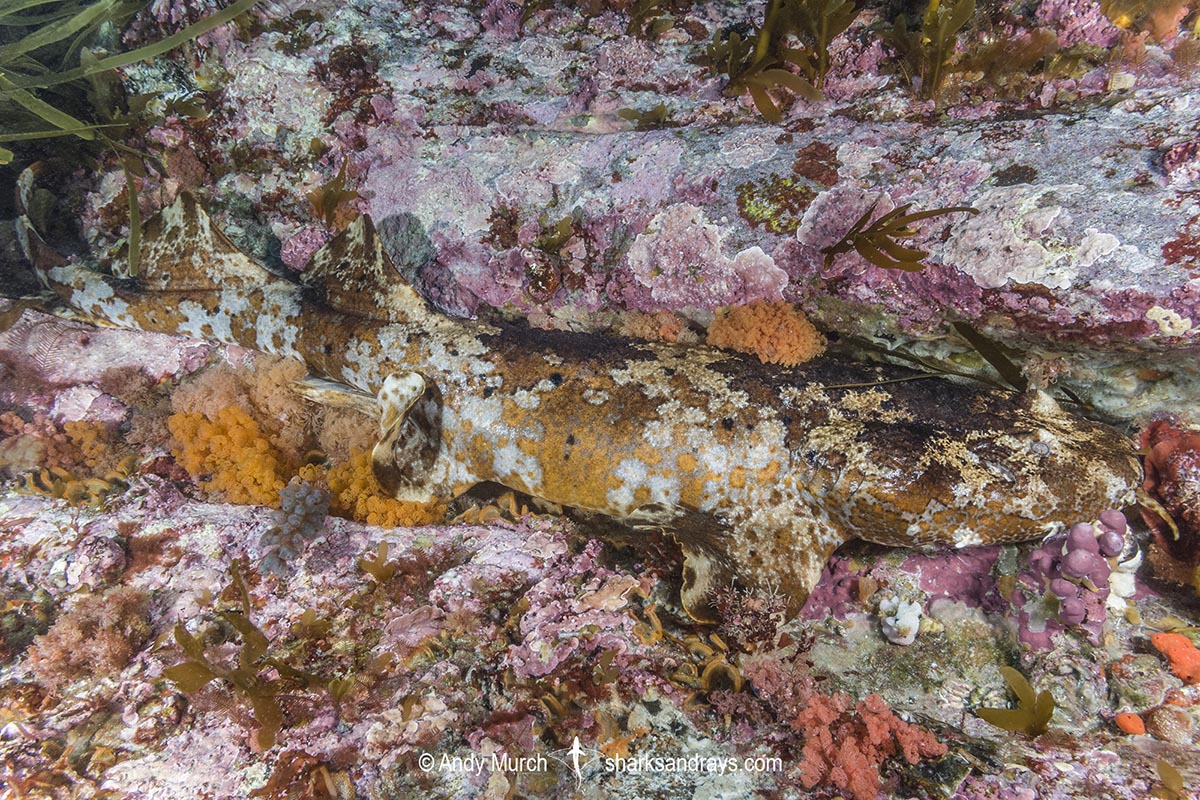
Conservation Status
LEAST CONCERN
The cobbler wobbegong is a poorly known species. It is a bycatch species in demersal gillnet and demersal longline fisheries in Western Australia and is an occasional bycatch elsewhere along the south coast. It is rarely retained due to its small size and there is no evidence to suggest population decline.
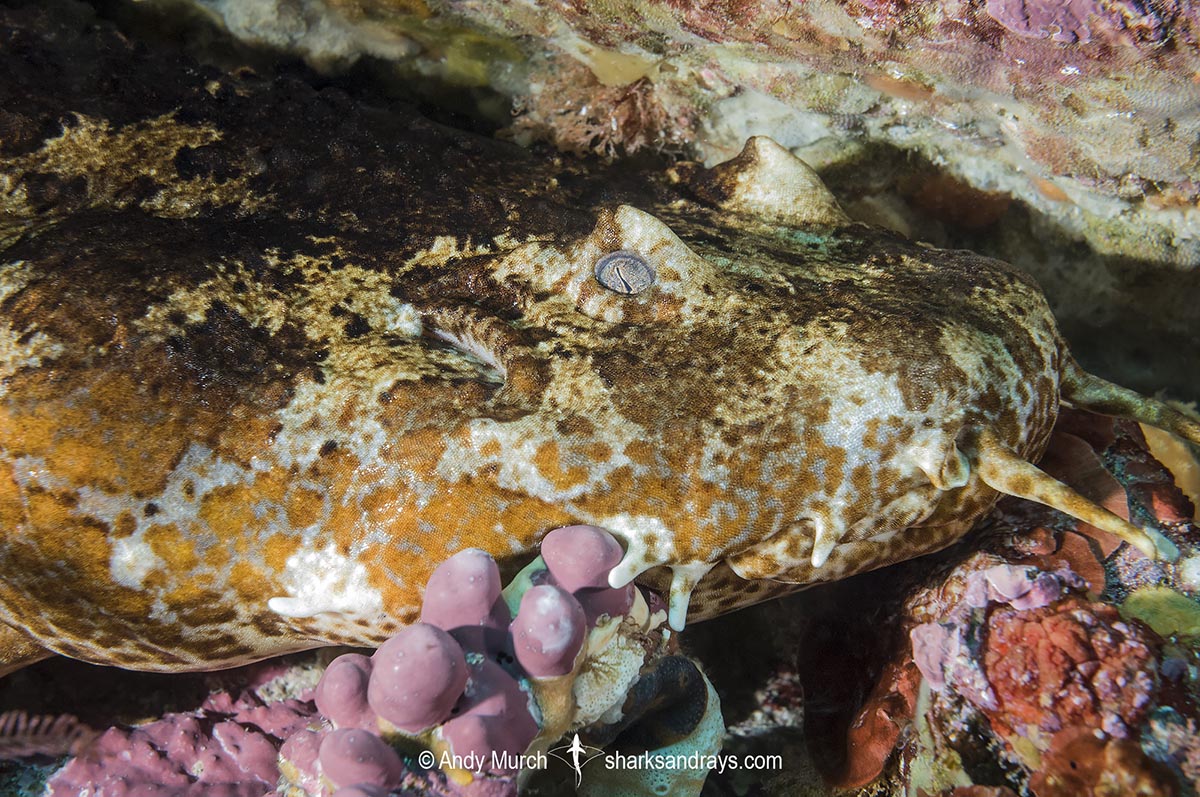
Habitat
Temperate seas. Found on rocky and coral reefs, and in kelp. To at least 35m depth.
Distribution
The cobbler wobbegong is confined to south and west Australia. From Adelaide west and northwards to the Abrolhos Islands.
Reproduction
Ovoviparous and likely lecithotrophic, i.e. the foetus is solely nourished by the yolk within the egg case. Maximum litter size at least 12 pups.
Diet
Bony fishes.
Behavior
Nocturnal. Rests by day on reef ledges or in weeds.
Reaction to divers
Very easy to approach. Remains at rest, relying on camouflage unless closely harassed.
CAUTION: Wobbegongs have been reported to have bitten divers that moved too close to their mouths, even when not disturbed.
Diving logistics
The cobbler wobbegong is a rarely encountered species. To date, I have found one animal; at 15m among kelp/weeds in Bremer Bay, W.A.
Other divers have reported encounters at Perth and Albany, and at Whyalla in South Australia.
What’s new
View our full list of updates
Similar species
Other Wobbegongs All other wobbegong species can be easily distinguished by a lack of warty dermal tubercles on head and back.

